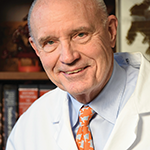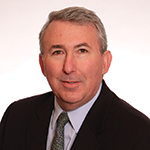At the University of Louisville, he says that support came from all levels—from the deans who helped fund the division to residents who helped create the website from which prospective fellows can get needed information on the fellowship program.
One challenge for a new program, he says, is that there are no data or experience that new applicants can draw on to review the program. “Being a new fellowship program is a red flag for a fellow applicant,” he says. “The rates of fellows passing the boards over the past five years are not available, and there is no one yet leaving the program who you can ask about the strengths and defects of the program.”
He says the website helps preempt some of the questions that prospective fellows will have when considering a new program that does not yet have some of the data talked about above.
To make it even easier to address potential questions regarding its program, Dr. Roberts says that in the future the program’s website will include an FAQ section that will address potential questions in one easy-to-access format.
Dr. Jung also highlights the importance of a fellowship coordinator, as well as establishing relationships with internal and external sources (see Table 1).
A key, if not the key, to launching a successful fellowship program in rheumatology or pediatric rheumatology is finding the money to support fellows.
Other Challenges
Robert H. Shmerling, MD, program director of the rheumatology training program at Beth Israel Deaconess Medical Center, Boston, cites ongoing changes required for the application process as particularly challenging.
“Understanding the requirements of the ACGME during the application process and keeping up with the changes in the requirements, documentation and evaluation process are challenging,” he says. “There is no real how-to manual to consult.”
Dr. Rouster-Stevens also cites the challenge of learning the new Web-based applicant system, the Program Director’s Workstation (PDWS), as well as other systems.
“As a new fellowship director, I feel that there are too many ‘systems’ that I had to learn about with overlapping features, and I wish there was one unified system for fellowship applicants,” she says, citing PDWS, National Resident Matching Program (NRMP), Electronic Residency Application Service (ERAS), and Fellowship and Residency Electronic Interactive Database Access System (FRIEDA).
A further challenge cited by both Drs. Shmerling and Rouster-Stevens is the challenge of attracting top-notch residents to the field of rheumatology.
“Identifying outstanding fellows who are committed to a three-year fellowship including a significant research component is challenging,” says Dr. Shmerling, who is also clinical chief in the Division of Rheumatology. “Fortunately, we’ve been able to attract wonderful fellows.”


